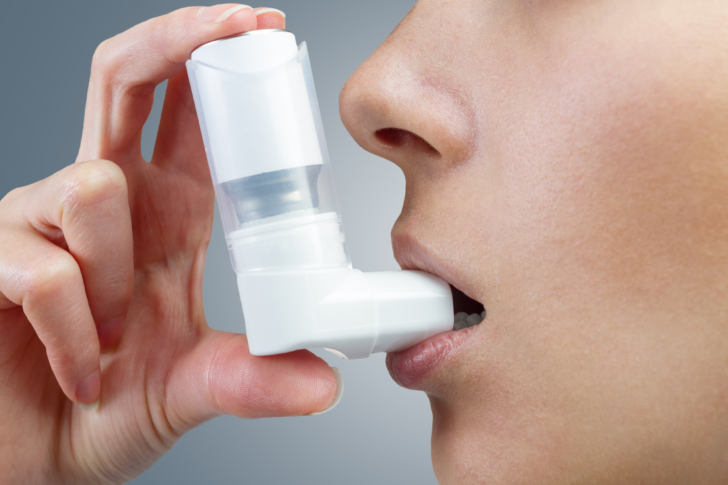

Identification and reduction of exposure to risk factors, such as cigarette smoke, air pollutants, and occupational fumes, are also important in treatment and prevention of COPD. Common classes of medications used in treatment of COPD include beta 2 agonists, antimuscarinics, inhaled corticosteroids (ICS), and combination therapy. Pharmacologic therapy for COPD is used to decrease symptoms, reduce the frequency and severity of exacerbations, and improve exercise intolerance. Classification of airflow limitation (grades 1-4) and symptom burden with exacerbation risk (groups A-D) is patient-specific and can occur in a variety of combinations. Patients’ symptom burden and risk of exacerbation are classified into GOLD groups A through D this is used to guide patients’ therapy. Patients’ airflow limitation with a post-bronchodilator forced expiratory volume/forced vital capacity (FEV 1/FVC) <0.7 is further classified based on the Global Initiative for Chronic Obstructive Lung Disease (GOLD) guidelines as either GOLD 1 (mild), GOLD 2 (moderate), GOLD 3 (severe), or GOLD 4 (very severe). Patients with COPD typically present with progressive shortness of breath, a chronic cough or recurrent wheeze, and chronic sputum production. Generally, the inflammatory and structural changes of the small airways increase with disease severity. The chronic inflammatory response may induce parenchymal tissue destruction resulting in emphysema, the disruption of normal repair and defense mechanisms resulting in small airway fibrosis. Inhaler selection should be individualized based on patients’ GOLD COPD classification, preference, ease of inhaler use, and cost.Ĭhronic obstructive pulmonary disorder (COPD) develops over time as the small airways become inflamed due to the inhalation of cigarette smoke or other noxious particles. Improper inhaler technique and cost may pose a barrier to medication adherence. The Global Initiative for Chronic Obstructive Lung Disease (GOLD) guidelines classify a patient’s COPD group and provide first-line therapy options. In recent years, novel inhalers have entered the market in a variety of delivery devices, active ingredients, and costs. These inhalers may contain short-acting beta 2 agonists, long-acting beta 2 agonists, short-acting muscarinic antagonists, long-acting muscarinic antagonists, or inhaled corticosteroids. ABSTRACT: Inhalers used in the treatment of chronic obstructive pulmonary disorder (COPD) come in a variety of novel mono-, dual-, and triple-therapies.


 0 kommentar(er)
0 kommentar(er)
